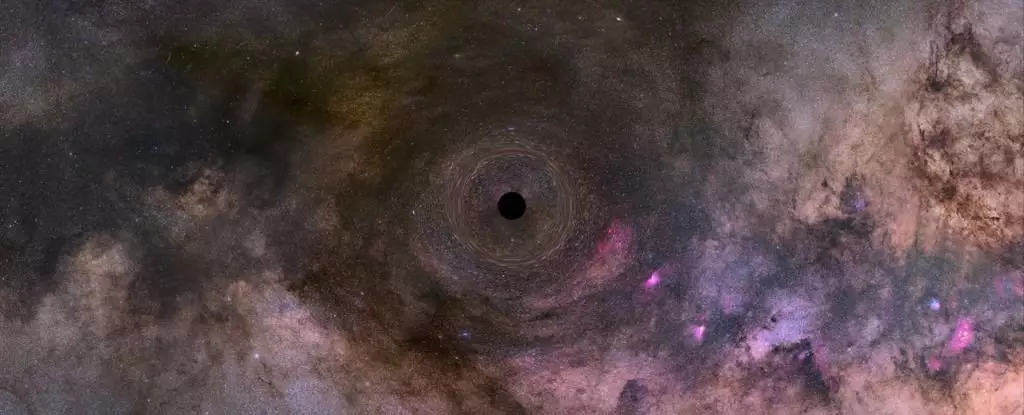In a stunning and groundbreaking revelation, astronomers have confirmed the existence of a solitary black hole in the cosmos, marking a significant milestone in our understanding of these enigmatic celestial phenomena. Previously, black holes were primarily identified in tandem with other stars or through the emission of gravitational waves in binary systems, but this particular black hole at approximately 7.15 times the mass of our Sun has ventured alone through the vast, indifferent expanse of space. Located an astounding 4,958 light-years from our home planet, this solitary entity is surging through the universe at an impressive speed of 51 kilometers (32 miles) per second—an impressive feat for an object engulfed by its own overwhelming gravitational pull.
The Method of Discovery
What sets this black hole apart from its more sociable counterparts is its sole existence. The discovery process involved intricate means, diverging from the usual paths taken to identify such phenomena. Traditionally, the presence of black holes is inferred through the gravitational influence they exert on nearby stars; this creates noticeable wobbles in their trajectories. The newfound black hole, however, revealed itself through a fascinating phenomenon known as gravitational microlensing. This occurs when the immense gravitational force of the black hole bends light from a more distant star, altering its apparent position and making it appear brighter. This unique method highlights the sophisticated nature of modern astrophysical techniques and the ingenuity required to unveil the secrets hidden deep within the universe.
From Discovery to Confirmation
The initial data leading to the discovery traces back to 2011, involving two ambitious surveys: the Optical Gravitational Lensing Experiment (OGLE) and the Microlensing Observations in Astrophysics (MOA). Follow-up observations by the Hubble Space Telescope over a period of six years allowed scientists to gather data on the extent to which the black hole distorted light from a background star. Initially, the calculated mass of the anomaly was recorded at an impressive 7.1 solar masses, but subsequent analyses in 2022 revised this estimation, suggesting it might be a neutron star instead.
This earlier analysis created a whirlwind of debate among scientists as neutron stars typically exhibit different properties than black holes. However, ongoing follow-up studies and additional Hubble observations—including those extending the data collection to 11 years—have reinstated confidence in the black hole hypothesis. The latest findings re-confirm the initial mass estimate while emphasizing the reliability of their observational methods.
The Challenges of Observation
One of the most compelling aspects of this discovery involves the challenges astronomers faced in isolating the black hole’s influence. Nearby luminous stars threatened to wash out the data from the background star, requiring meticulous subtraction of background light from each observation. Additionally, variations in thermal conditions needed to be accounted for during Hubble’s orbits. Every stage of the analysis required immense attention to detail, exemplifying the dedication and commitment required in astronomical studies.
An Insight Into the Universe
Despite this special finding, it’s crucial to recognize that the universe likely harbors many more of these lone black holes. The discovery of this solitary entity illuminates our understanding of the black holes’ lifecycle and distribution in the universe. The fact that it managed to reveal itself while drifting alone through space raises tantalizing questions about unseen black holes waiting to be discovered.
As researchers continue to investigate further, they also reported that no companion star, stronger than 0.2 solar masses, was detected within a wide radius, reinforcing the solitary nature of this black hole.
In an age where astrophysics stands at the forefront of scientific exploration and discovery, understanding solitary black holes not only enriches theoretical frameworks surrounding the life cycles of stars but also opens new avenues for exploring cosmic mysteries. The reality is that the cosmos is not merely a stage for massive celestial bodies; it is a theater of complex interplay and dynamic interactions that offer glimpses into the very fabric of our universe. With each revelation, we inch closer to fully appreciating the vastness and intricacies of not only black holes but the cosmic ballet that governs existence itself.


Leave a Reply